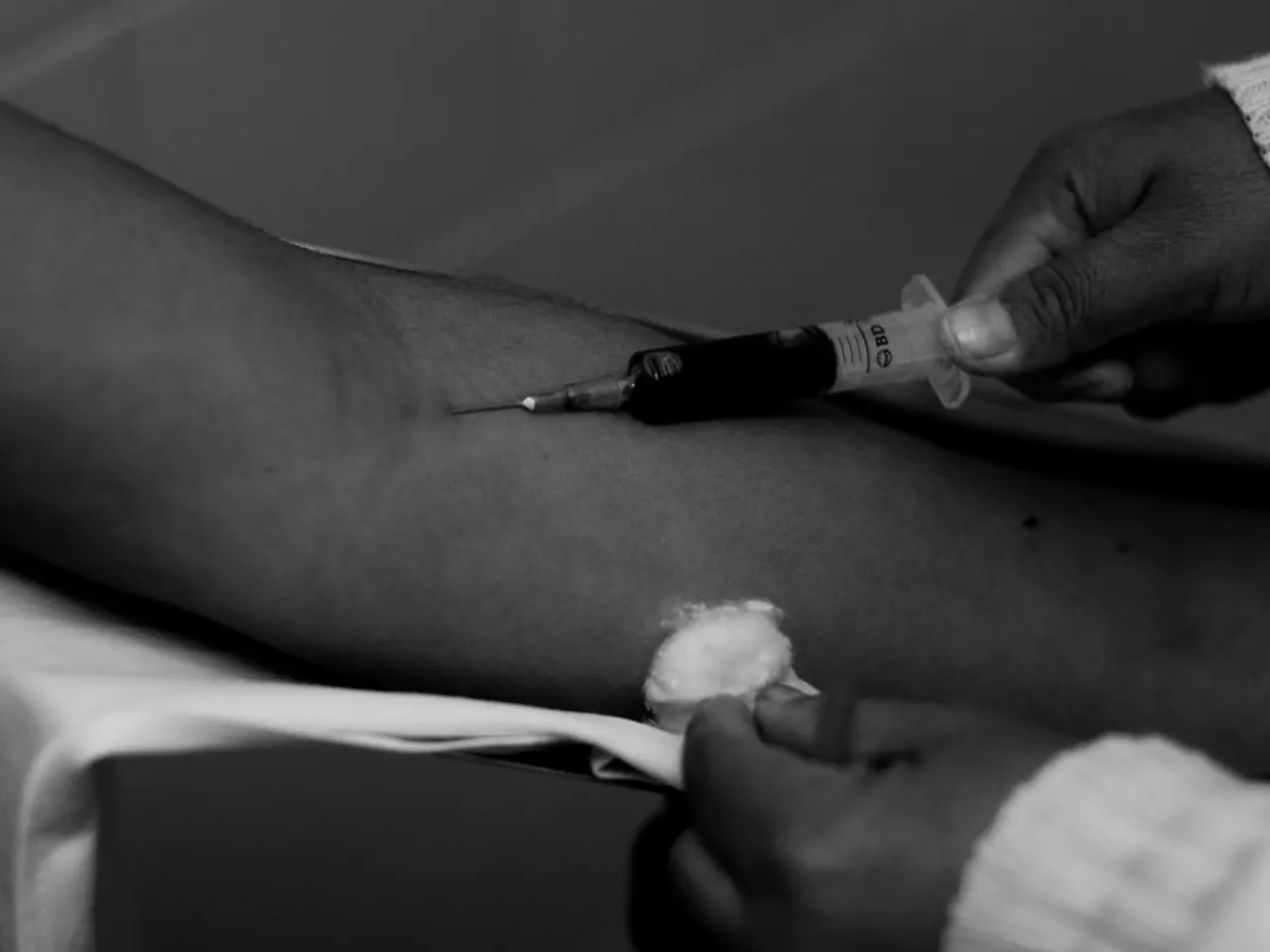Abdominal discomfort near the navel: Reasons, remedies, and when medical advice is necessary
Periumbilical pain, a painful sensation around the belly button, can be a sign of various conditions related to the abdominal tract or blood flow. Understanding these conditions and their treatments is crucial for prompt and effective medical intervention.
One common cause of periumbilical pain is a hernia, specifically a periumbilical hernia. This condition occurs when there is a weakness or hole near the navel, allowing fatty tissue or parts of the bowel to push through. If tissue becomes trapped (incarcerated), it can lead to severe pain and may require emergency surgery to prevent complications.
Another cause is appendicitis, a potentially life-threatening inflammation of the appendix. Pain often starts around the periumbilical region before moving to the right lower abdomen. Diagnosis involves lab tests and imaging, and treatment is urgent surgical removal.
Gastrointestinal inflammatory conditions such as gastritis can also cause periumbilical pain. Gastritis is an inflammation of the stomach lining that can be caused by infections, alcohol, autoimmune diseases, and non-steroidal anti-inflammatory drugs (NSAIDs). Treatment involves medication and dietary changes.
Kidney stones, though pain is typically in the lower back, can radiate to the periumbilical and lower abdominal areas. Treatment ranges from hydration and pain control to procedures for stone removal.
Mesenteric ischemia, or vascular issues affecting abdominal blood flow, can also cause periumbilical pain. This serious condition requires urgent medical attention and vascular assessment.
Treatments for these conditions depend on the underlying cause. Surgical repair is often necessary for hernias, especially if strangulation is a risk. Appendectomy is the treatment for appendicitis, while medications and lifestyle modifications are common for gastritis. Hydration, pain control, and possible lithotripsy or surgical intervention are used for kidney stones.
Diagnostic approaches to periumbilical pain often involve lab tests to check for infection or inflammation, imaging such as ultrasound or CT to identify appendicitis, hernia complications, or other organ involvement, and symptom monitoring to guide urgency and treatment choices.
In cases where periumbilical pain may indicate a blood flow issue or serious abdominal pathology, prompt medical evaluation including imaging and possibly surgical consultation is essential to prevent complications. For instance, acute appendicitis requires a rapid diagnosis and surgery for treatment, while abdominal aortic dissection, a tear in the aorta, requires immediate medical attention.
In summary, periumbilical pain can be a sign of various conditions, ranging from hernias and appendicitis to gastrointestinal inflammations and kidney stones. Prompt medical evaluation and appropriate treatment are crucial for a favourable outcome. Always seek medical advice if experiencing persistent periumbilical pain.
- A periumbilical hernia, a condition characterized by weakness or a hole near the navel, can cause pain and may demand emergency surgery if tissue becomes incarcerated.
- Gastrointestinal inflammatory conditions, such as gastritis, can lead to periumbilical pain, and treatment usually involves medication and dietary adjustments.
- In addition to lower back pain, kidney stones can also cause periumbilical and lower abdominal pain, requiring various treatments ranging from hydration to surgery for stone removal.
- Mesenteric ischemia, a vascular issue affecting abdominal blood flow, can result in periumbilical pain and necessitates urgent medical intervention as it is a serious condition.




